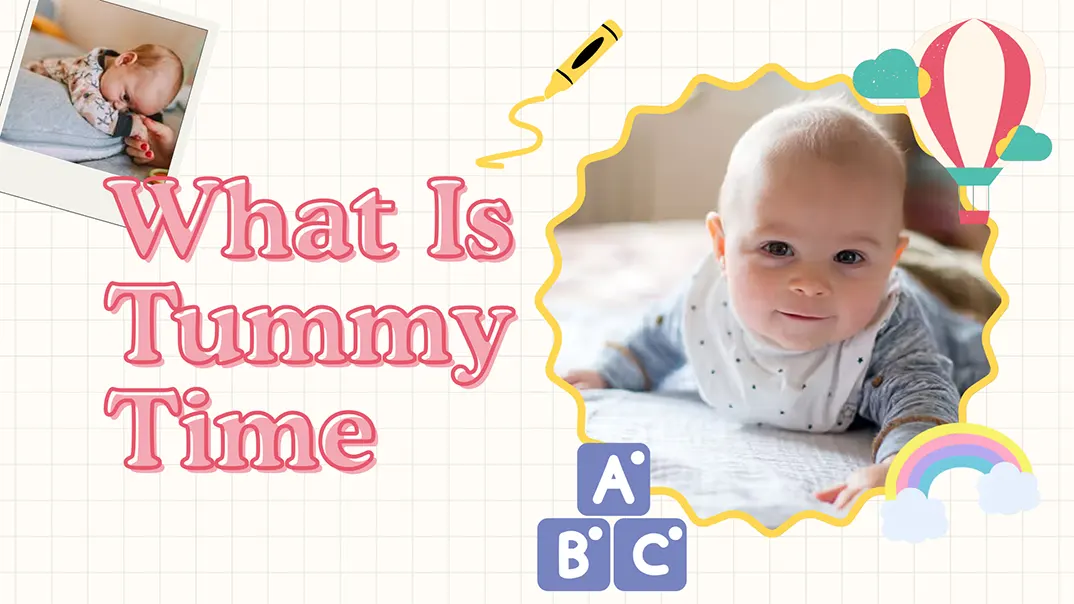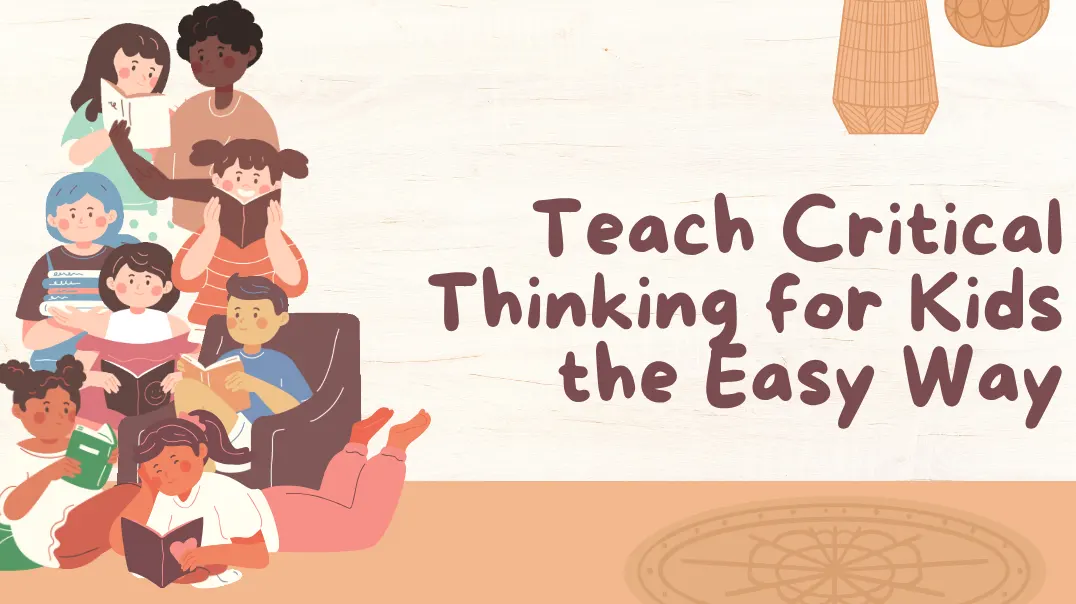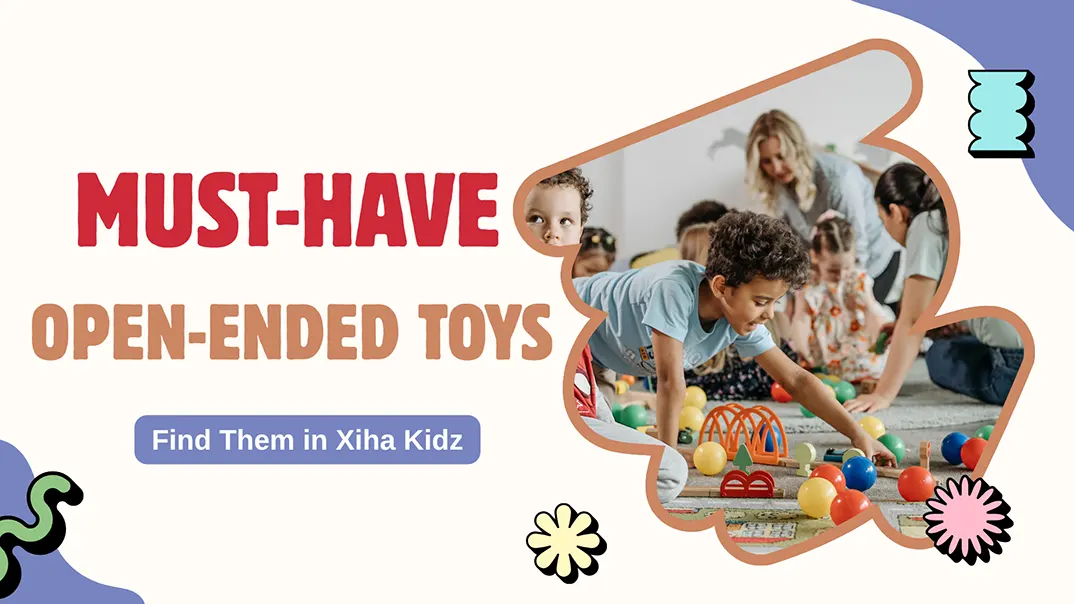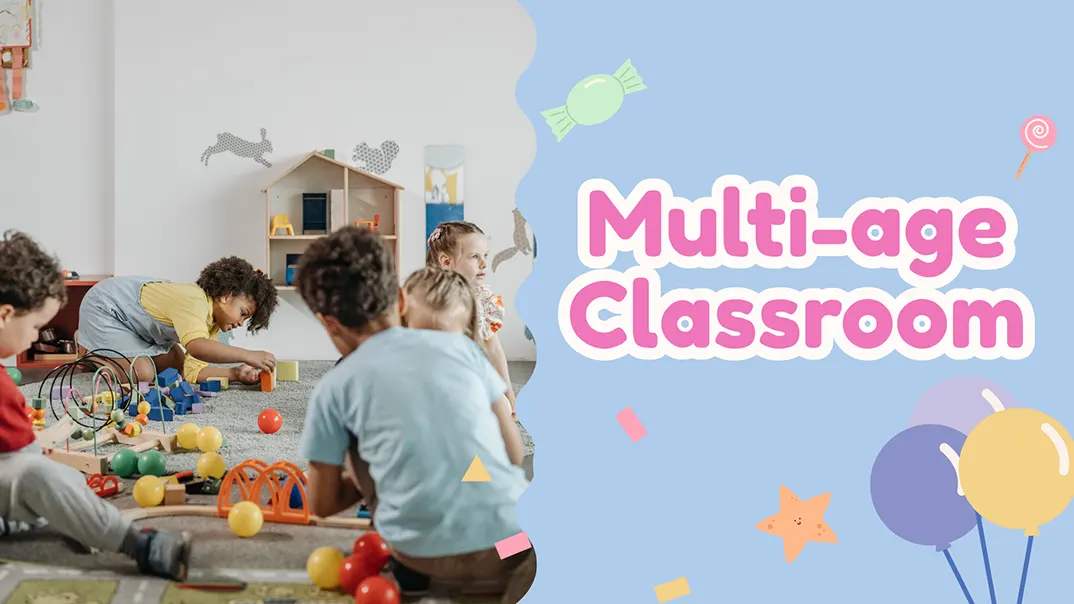Despite your best efforts, does your classroom sometimes feel like chaos? Managing a classroom can be daunting when kindergarten classroom rules are unclear or ineffective. Disruptive behavior disrupts learning and can lead to safety concerns and hinder children’s social development.
Well-developed kindergarten classroom rules are the backbone of a harmonious learning environment. They provide structure, ensure safety, and guide children to develop empathy, self-control, and cooperation. Thoughtfully designed and consistently implemented, rules can turn chaos into calm.
Suppose you want to create an effective, well-structured kindergarten classroom. In that case, this guide will walk you through each step – from understanding the importance of rules in the kindergarten classroom to effectively developing rules for your unique student population.
What Are Kindergarten Classroom Rules?
Kindergarten classroom rules are simple guidelines designed to establish expected behaviors for young children. These rules for the classroom kindergarten provide a roadmap for how children should interact with their peers, respect their environment, and participate in learning activities.
Unlike rules for older children, classroom kindergarten rules must accommodate the developmental stage of preschoolers. Young learners are still developing their language skills, impulse control, and understanding of social norms, so the rules must be age-appropriate, visual, and easy to follow.
Importance of Creating Kindergarten Classroom Rules
Establishing clear and effective classroom rules for kindergarten is critical for many reasons. Let’s dive deeper into the key benefits:
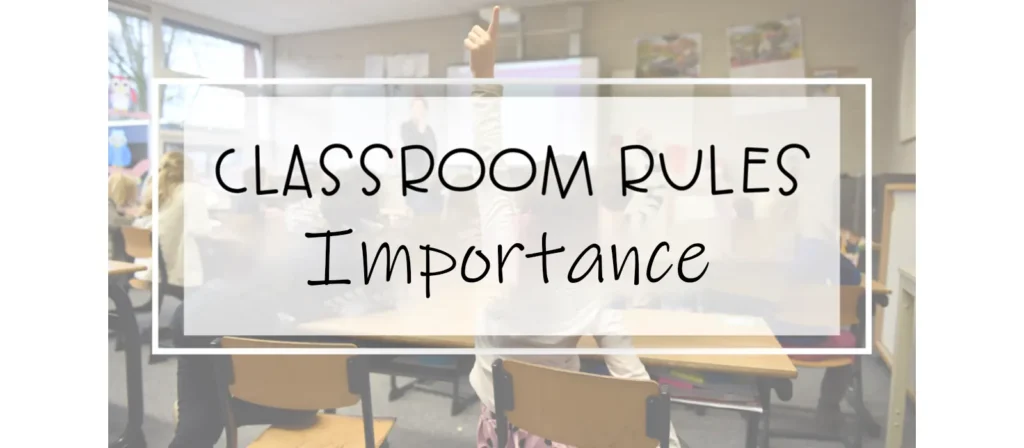
1. Promote Independence and Critical Thinking
By following classroom rules in kindergarten, children learn to make decisions independently. For example, a rule like “Clean up after playtime” teaches children to take responsibility for their actions without constant reminders. Over time, they develop the confidence to assess situations and determine the best action.
These rules also encourage critical thinking. Children must evaluate their behavior and adjust to meet the expectations set by the rules. This process strengthens their problem-solving skills and prepares them for more complex challenges in the future.
2. Develop Self-Regulation and Empathy
Impulse control can be challenging for young children. Rules like “Use kind words” and “Take turns” help children pause and think about their actions. These guidelines teach them to regulate their emotions and consider how their behavior affects others.
Through consistent practice, children learn to manage their feelings and develop empathy. For instance, when a child waits patiently for a turn, they understand the value of fairness and the importance of considering others’ needs.
Transform Your Classroom with Custom Furniture Solutions
3. Promote Safety
Safety is paramount in any classroom. Rules like “Keep hands and feet to yourself” and “Walk inside the classroom” protect children from physical harm. They also create an environment where children feel secure, which is essential for learning.
When safety-focused rules for a kindergarten classroom are reinforced consistently, children internalize these behaviors, creating a culture of awareness and precaution.
4. Improve Learning Outcomes
Clear rules minimize distractions, allowing children to focus on learning. When every student understands expectations, the classroom becomes a space of mutual respect and collaboration.
For example, “Follow directions the first time” helps teachers spend less time repeating instructions and more time engaging with their students. This efficient use of time directly contributes to better academic outcomes.
Classroom Rules and Expectations
Establishing clear expectations is key to the success of any kindergarten classroom rules. Below is a detailed table illustrating effective rules, their purposes, and the behaviors they encourage:
| Rule | Purpose | Example Behavior |
|---|---|---|
| Be kind to everyone. | Encourages empathy and inclusivity. | Helping a friend or sharing toys. |
| Keep hands and feet to yourself. | Ensures safety and respect. | Foster’s responsibility and organization. |
| Raise your hand to speak. | Promotes orderly communication. | Waiting quietly to be called on during group discussions. |
| Clean up after playtime. | Fosters responsibility and organization. | Returning toys to their designated places. |
| Use walking feet indoors. | Reduces accidents and maintains calm. | Walking slowly in the classroom or hallways. |
| Follow directions the first time. | Encourages attentiveness and cooperation. | Starting tasks immediately after instructions. |
Visual tools such as a classroom rules poster for kindergarten ensure these guidelines are always accessible and memorable for children.
What to Consider When Creating Preschool Classroom Rules?
Designing rules of the classroom preschool isn’t as simple as setting limits—it requires careful thought about who the children are and what they need. Here are key considerations:
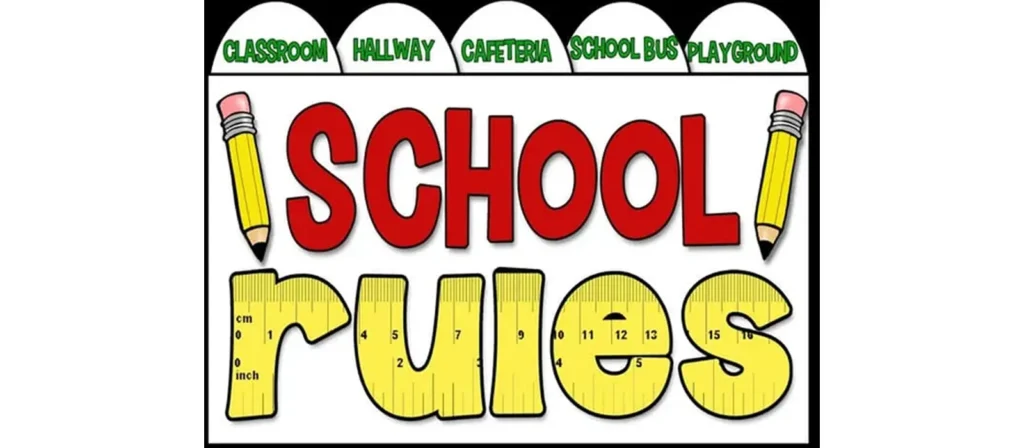
1. Children’s Cultural Background
Children come from diverse cultures, and their understanding of acceptable behavior may vary. For example, eye contact might be a sign of respect in one culture and a source of discomfort in another. Incorporating inclusive practices ensures preschool classroom rules resonate with all students and foster a sense of belonging.
2. Age-Appropriate Rules
Preschool-aged children have limited attention spans and are still developing language comprehension. Simple classroom rules for kindergarten should be concise and framed in positive language. For example, “Using walking feet indoors” is easier for a child to grasp than “No running inside.”
3. Respect Everyone
Teaching respect isn’t limited to peer interactions; it includes respect for teachers, materials, and shared spaces. Preschool rules for the classroom, like “Ask before borrowing something,” encourage polite and considerate behavior.
4. Safety First
Safety-focused rules are critical in environments where young children may not recognize risks. A rule such as “Use both hands on the climbing frame” can prevent accidents while allowing play.
5. Be Prepared to Adapt
Rules are not static. As children grow, learn, and present new behaviors, rules may need updating to remain effective. Regular reviews ensure relevance and alignment with classroom needs.
How to Create Kindergarten Classroom Rules?
Crafting classroom rules lesson plans kindergarten requires balancing clarity, engagement, and developmental appropriateness. Here’s how to do it effectively:

1. Set Expectations Early
Introduce rules for the classroom kindergarten on the first day of school to establish the tone for the year. Use examples and role-playing to demonstrate expected behaviors. For example, act out what “Raise your hand before speaking” looks like during group activities.
2. Keep Rules Short and Clear
Preschoolers process information best when it’s simple. Avoid complicated phrases or lengthy explanations. Instead of “Ensure you do not move too quickly around the classroom,” simply say, “Walk inside.”
3. Make Sure Rules Are Positive
Frame simple preschool classroom rules to focus on what children should do. Positive language reinforces desired behavior, while negative language might feel punitive. For example, replace “Don’t shout” with “Use a quiet voice.”
4. Incorporate Visual Elements
A classroom rules poster for kindergarten with colorful images helps children remember and follow the rules. Pair each rule with a visual cue for maximum impact.
Transform Your Classroom with Custom Furniture Solutions
5. Involve Children in Rule Creation
Engage students in the rule-making process. Ask for their input and let them help create visual aids. This involvement fosters ownership and accountability.
6. Make Consequences Clear
Rules must have logical consequences to be effective. For example, if a child interrupts, the consequence might be to wait longer for their next turn to speak.
7. Display Rules Prominently
Put simple classroom rules for kindergarten at eye level for children, and decorate them with colors or illustrations to make them stand out. Regularly revisit and rehearse the rules during circle time.
15 Simple Kindergarten Classroom Rules
Here’s a comprehensive list of rules for a kindergarten classroom to inspire your classroom guidelines:
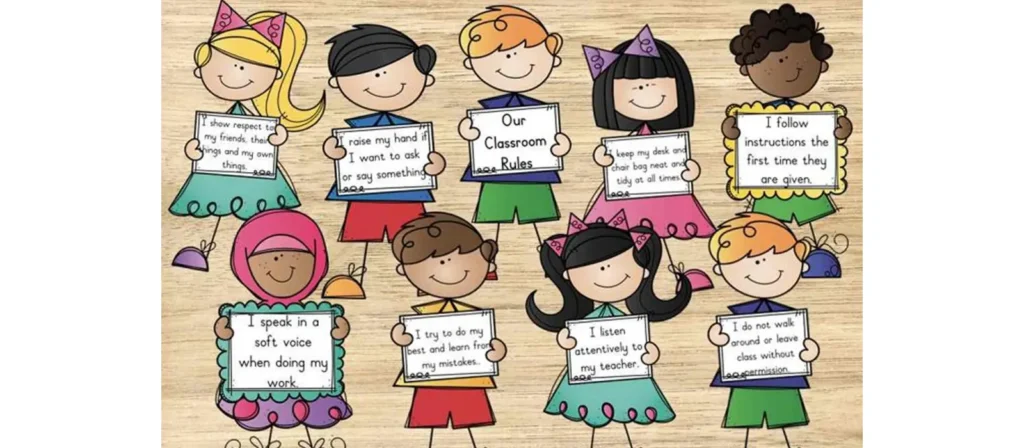
- Be kind to others.
- Raise your hand before speaking.
- Use your inside voice.
- Walk, don’t run.
- Keep your hands and feet to yourself.
- Clean up after playtime.
- Share and take turns.
- Say “please” and “thank you.”
- Listen when others are speaking.
- Respect others’ belongings.
- Stay in your seat unless told otherwise.
- Follow directions the first time.
- Take care of classroom materials.
- Ask for help when needed.
- Be patient and wait your turn.
The Role of Visuals in Daycare Classroom Rules
Visuals are invaluable tools for reinforcing Daycare Classroom Rules, especially for preschoolers who are visual learners. Incorporating visuals enhances understanding and retention of classroom rules for preschoolers.
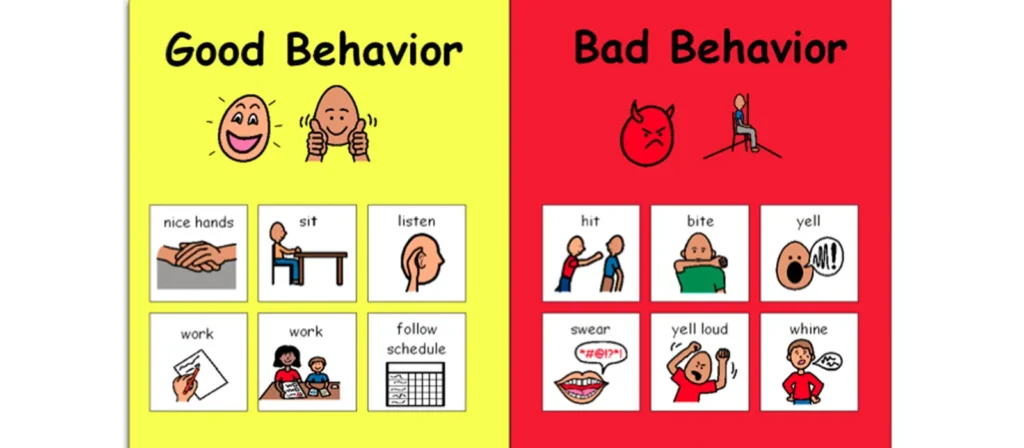
- Illustrated Rule Posters: Combine pictures with text to visually represent each rule. For example, a picture of children sitting in a circle can represent “Listen to the teacher.”
- Behavior Charts: Use colorful stickers or tokens to track positive behavior linked to the rules.
- Role-Playing with Props: Act out scenarios using toys or puppets to reinforce how following preschool classroom rules leads to positive outcomes.
Visual aids make simple preschool classroom rules more engaging and empower children to internalize them more effectively.
How to Introduce Classroom Rules to Preschoolers?
Introducing kindergarten classroom rules effectively is the first step in setting the stage for a well-managed classroom. Here’s how to ensure success:
Explain the Importance of Rules
Preschoolers need to understand why rules exist. Discuss how rules help everyone stay safe, have fun, and learn. Use relatable examples like:
- “If we all share the toys, everyone gets a turn to play.”
- “Walking instead of running keeps us from bumping into each other.”
Incorporate stories or puppet shows where characters learn the importance of following classroom kindergarten rules. This makes the concept relatable and fun.

Model the Rules
Children learn best through observation. Demonstrate each rule yourself, showing exactly what it looks like. For instance:
- If the rule is “Raise your hand to speak,” model raising your hand and waiting quietly.
- For “Clean up after playtime,” show how to put toys back in their designated spots.
Engage children by asking them to practice the rules immediately after you model them.
Become a Role Model for the Rules
As a teacher, consistently follow the rules yourself. Children mimic what they see. If they observe you respecting rules, they will likely do the same. For example:
- If the rule is “Use kind words,” ensure you use positive and encouraging language with students and colleagues.
Perform Interactive Role-Playing Activities
Turn to learn into play! Use role-playing scenarios to show both rule-following and rule-breaking behaviors. For example:
- Act out what happens when a child doesn’t take turns, followed by how much better it feels to share.
- Let students take turns being teachers, enforcing classroom rules for preschoolers with their peers.
How to Enforce Classroom Rules?
Introducing kindergarten classroom rules is just the first step. Enforcing them consistently ensures their effectiveness.

1. Be Consistent
Consistency is key to successful enforcement. Always respond to both rule-following and violations in the same way. For instance, if the rule is “Use your inside voice,” ensure the expectation is the same during storytime, free play, and transitions.
2. Use Positive Reinforcement
Rewarding good behavior encourages children to repeat it. Offer verbal praise (“Great job walking indoors!”), stickers, or small classroom privileges for following rules. Positive reinforcement helps children feel proud of their actions.
3. Provide Gentle Reminders
Young children forget rules easily. Instead of scolding, gently remind them: “Remember, we walk inside so no one gets hurt.” These prompts are more effective than punishments and encourage children to self-correct.
4. Address Issues Calmly
Children are more likely to respond positively when teachers handle rule-breaking with patience and calmness. Use a neutral tone and avoid shaming the child. For example: “I noticed you didn’t wait your turn. Let’s try again.”
Where to Put Kindergarten Classroom Rules?

The placement of your kindergarten classroom rules significantly impacts how well children remember and follow them.
Prominent Locations
Display the rules in areas where children spend the most time, such as:
- Near the door for a daily reminder as they enter.
- Above the toy shelf to encourage cleaning up.
- Next to the group area for easy reference during circle time.
Child-Friendly Accessibility
Place the classroom rules poster for kindergarten at a child’s eye level. This ensures they can see and engage with the rules without needing assistance.
Interactive Displays
Incorporate interactive elements, such as:
- Velcro symbols children can move to indicate which rule they’re focusing on.
- Space for children to add their illustrations of the rules.
These strategies make the rules more engaging and encourage ownership.
Reward Children Who Follow Classroom Rules
Positive reinforcement is a powerful motivator, especially for young children. Recognizing and rewarding rule-following behavior encourages children to stay on track.

1. Verbal Praise
A simple “Great job sharing!” or “Thank you for waiting patiently” reinforces good behavior immediately and positively.
2. Classroom Rewards
Introduce a group reward system, such as filling a jar with marbles whenever the class follows a rule together. Once the jar is full, celebrate with a group activity like a dance party or storytime with a special guest.
3. Individual Incentives
Use sticker charts or tokens to reward children for consistently following classroom kindergarten rules. Once they collect enough stickers, they can earn small privileges, like choosing the story for the day.
4. Display Achievements
Create a “Superstar Board” where children’s names or photos are displayed for exceptional rule-following. Public acknowledgment motivates others to follow suit.
Transform Your Classroom with Custom Furniture Solutions
Handling Kindergarten Violations and Discipline Issues
Even with the best strategies, children will occasionally test boundaries. How you handle violations can make or break the effectiveness of your kindergarten rules for the classroom.
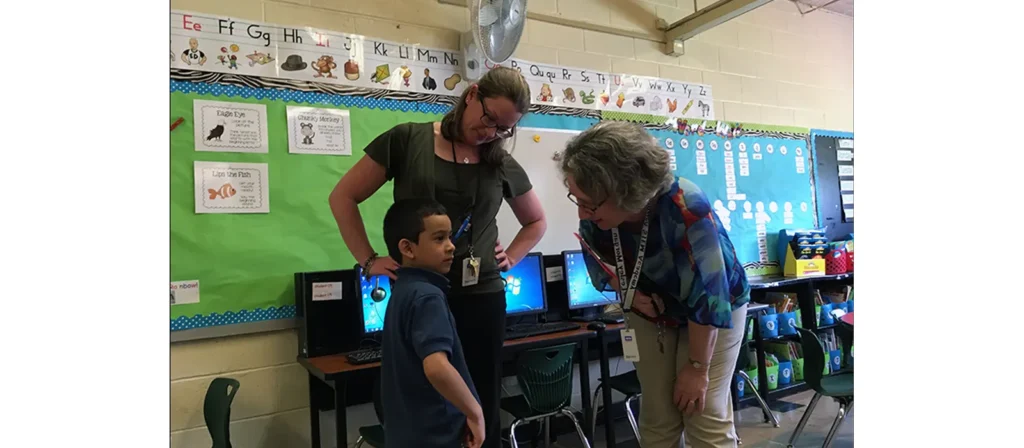
1. Stay Calm and Neutral
Children are likelier to respond positively when corrections are delivered without anger or frustration. Use a calm, gentle voice to explain the issue.
2. Use Logical Consequences
Align consequences with the behavior. For example:
- If a child doesn’t clean up, they lose access to the toy they left out.
- If they interrupt others during circle time, they wait longer for their next turn to speak.
3. Revisit and Reinforce the Rules
When a child breaks a rule, take the opportunity to remind the class of its importance. For example: “Let’s talk about why we take turns. It makes everyone feel included.”
4. Work with Parents
If a child frequently breaks the rules, involve their parents. Share strategies for reinforcing rules at home and seek their input to address underlying issues.
Managing Emotions and Behaviors in Kindergarten Classrooms
Children’s emotions often drive their behavior, making emotional regulation a cornerstone of effective classroom management.
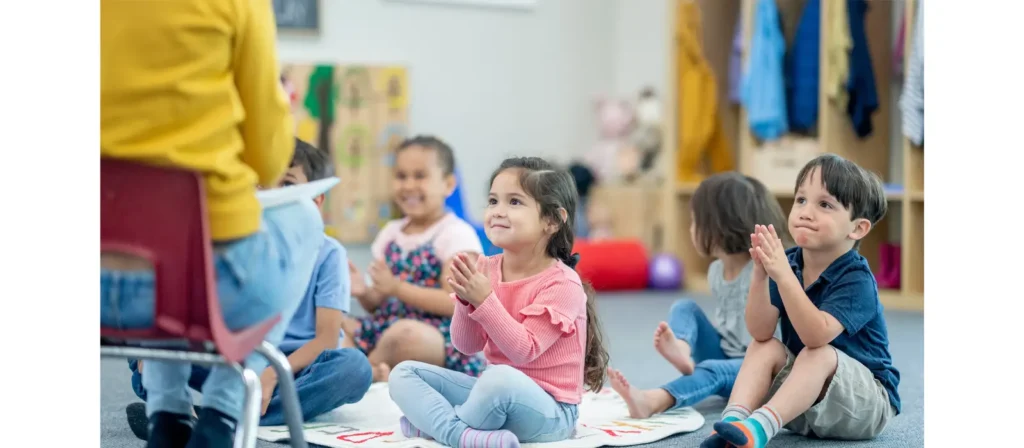
1. Teach Emotional Literacy
Help children identify and name their emotions. Use tools like emotion charts or books about feelings to guide discussions.
- Emotion cards to help children express how they feel.
- Breathing exercises or mindfulness techniques to calm down when upset.
2. Offer Coping Strategies
Equip children with age-appropriate ways to manage their feelings. Examples include:
- Taking deep breaths when frustrated.
- Using words to express sadness or anger.
- Asking a teacher for help when overwhelmed.
3. Create a “Calm Down” Space
Set up a cozy corner with calming tools like stuffed animals, classroom furniture, or books. Encourage children to use this space to self-regulate when they feel upset.
4. Praise Emotional Growth
Recognize when children manage their emotions well. For example, say, “I’m so proud of you for waiting your turn even though you were excited to share.”
Addressing emotional needs lays the foundation for better adherence to classroom rules in kindergarten and overall harmony in the classroom.
Conclusion
Introducing and enforcing kindergarten classroom rules doesn’t have to be a daunting task. Educators can create a safe, respectful, and fun learning environment by focusing on clear communication, modeling, consistency, and positive reinforcement. Addressing challenges with empathy and understanding ensures that every child thrives under these guidelines.
Whether it’s through engaging visuals, rewarding positive behavior, or managing emotions effectively, these strategies help build a classroom where every child can succeed.


